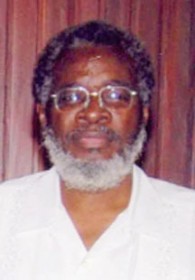Cabinet Secretary Dr. Roger Luncheon has said that Guyanese are not likely to start benefiting in a major way from government’s fibre optic cable until another two to three years.
He made the disclosure yesterday at his weekly post-Cabinet news briefing in response to a question on how soon Guyanese could benefit from the investment. “It wouldn’t be likely in about two to three years.
When I’m saying two to three years I’m talking specifically about a widespread benefit not isolated because I’m pretty certain that the benefits would evolve from its earliest stage to a more mature stage as we get the benefits of what might be the most primary offer and then as we move in to value added.”
Dr. Luncheon said the fibre optic cable and its laying is costing some US$33M and those

contracts have been signed.
The cable has been landed in Guyana from Brazil and is entering through Lethem and will run to Linden then on to Providence. He said its now “almost exclusively” a Guyanese responsibility to have the cable laid. President Bharrat Jagdeo on Monday told this newspaper that the recent inclement weather has affected that aspect of the operation.
The fibre optic cable will be the backbone of the administration’s e-governance thrust and Jagdeo on Monday disclosed at the launch of E-Networks WiMax 4G Network that they had signed a US$35M contract with Chinese firm Huawei to build internet networks across Guyana as part of its e-governance thrust.
He stated that government was also pursuing the WiMax network which Huawei will install in all towns while another advanced technology will bring internet access to the rural areas.
“This would allow us to move fully into e-government mode, hooking up our schools and our hospitals and our police stations and everything else so that we can deploy technology in the service of our people,” Jagdeo said.
Dr. Luncheon yesterday stated that the money being used for the initiative was public funds and that the project had gone out for international tender. Huawei, he said, will have a presence here for the next three to five years helping to commercialise the investment. “They are here now to convert the physical investment into a marketing tool, to tell us how to recover, how to build value, how to do all the different things we need to do to allow us to make some money from this investment.





